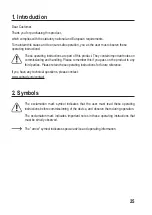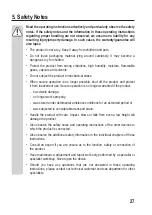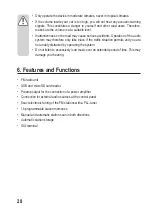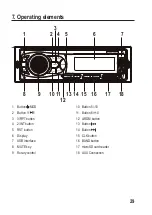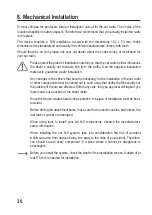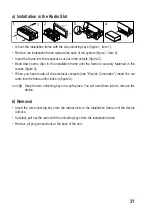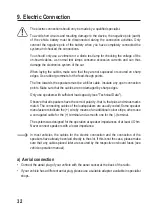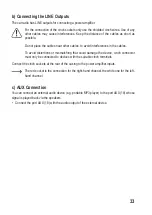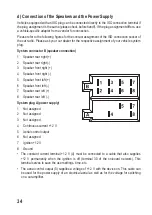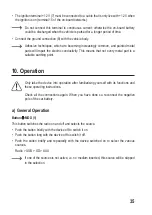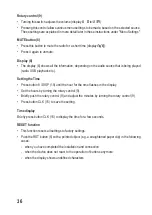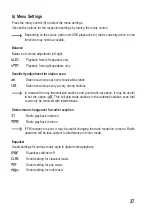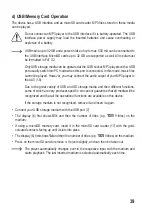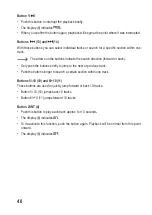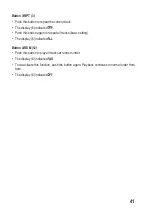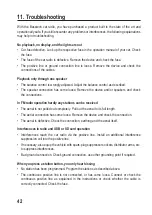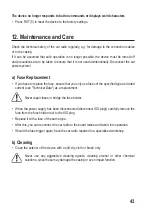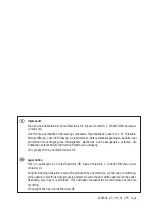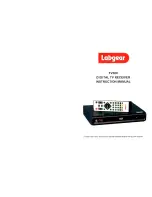
d) USB/Memory Card Operation
The device has a USB interface and as microSD card reader. MP3 files stored on these media
can be played.
Do not connect an MP3 player to the USB interface if it is battery-operated. The USB
interface power supply may load the inserted batteries and cause overheating or
explosion of a battery.
USB media up to 32 GB and a power intake of up to max. 500 mA can be connected to
the USB interface. MicroSD cards up to 32 GB are supported as well. All media must
be formatted in FAT 32.
Only USB storage media can be operated at the USB socket. MP3 players with a USB
port usually switch into PC mode when this port is connected. In this mode, music files
cannot be played. However, you may connect the audio output of your MP3 player to
the AUX (18).
Due to the great variety of USB and SD storage media and their different functions,
some of which are very producer-specific, we cannot guarantee that all media will be
recognized and that all the operational functions are available on this device.
If the storage medium is not recognised, remove it and insert it again.
•
Connect your USB storage medium with the USB port (7).
• The display (6) first shows
and then the number of titles (e.g.
9 titles) on the
medium.
•
If using a microSD memory card, insert it in the microSD card reader (17) with the gold-
coloured contacts facing up until it slots into place.
• The display (6) first shows
and then the number of titles (e.g.
9 titles) on the medium.
•
Press on the microSD card to remove it. It ejects slightly, and can then be taken out.
The player automatically changes over to the respective input with the medium and
starts playback. The last inserted medium is selected automatically each time.
39

